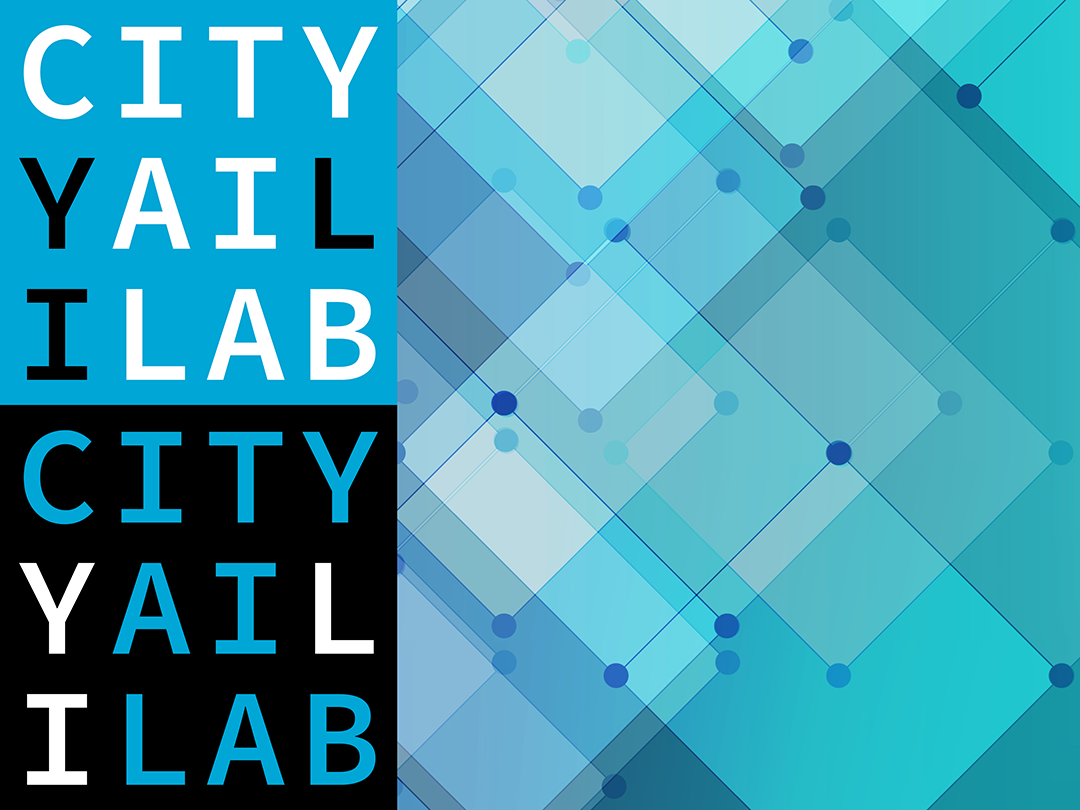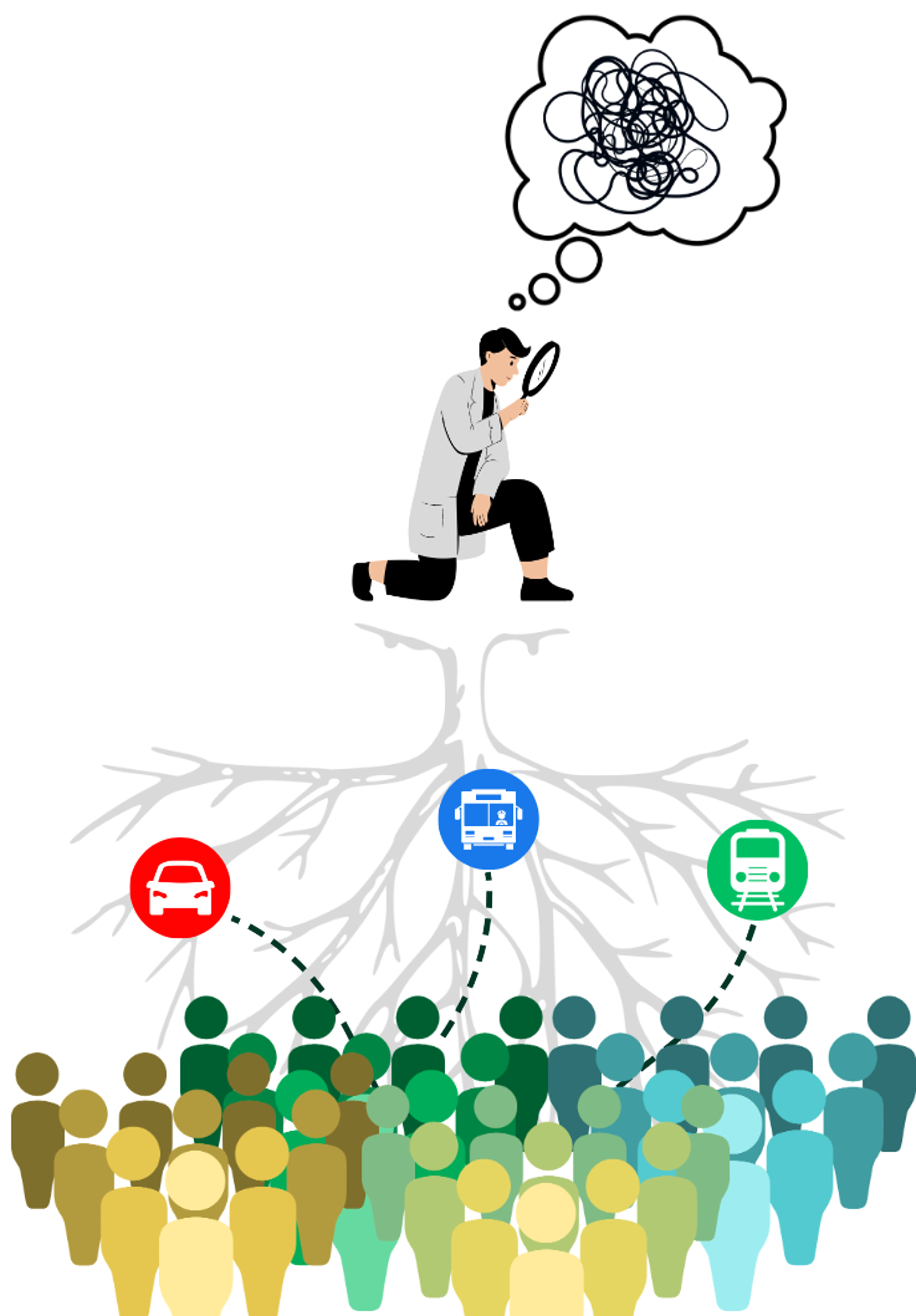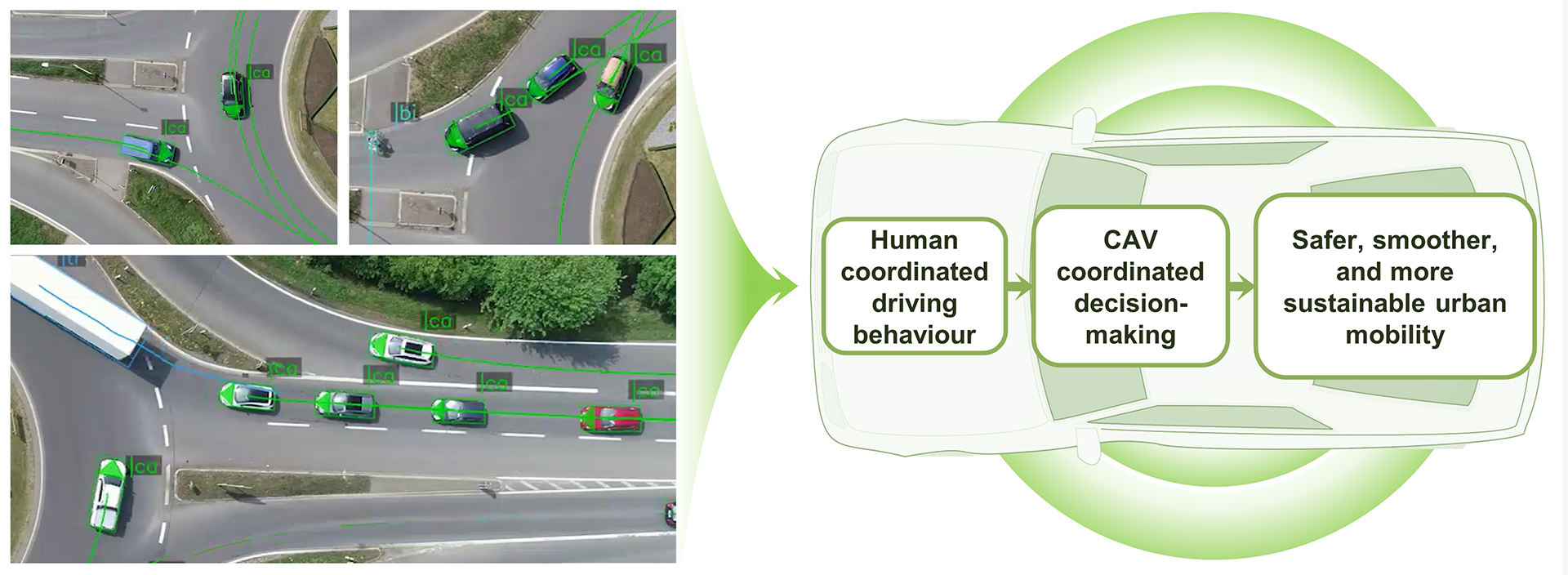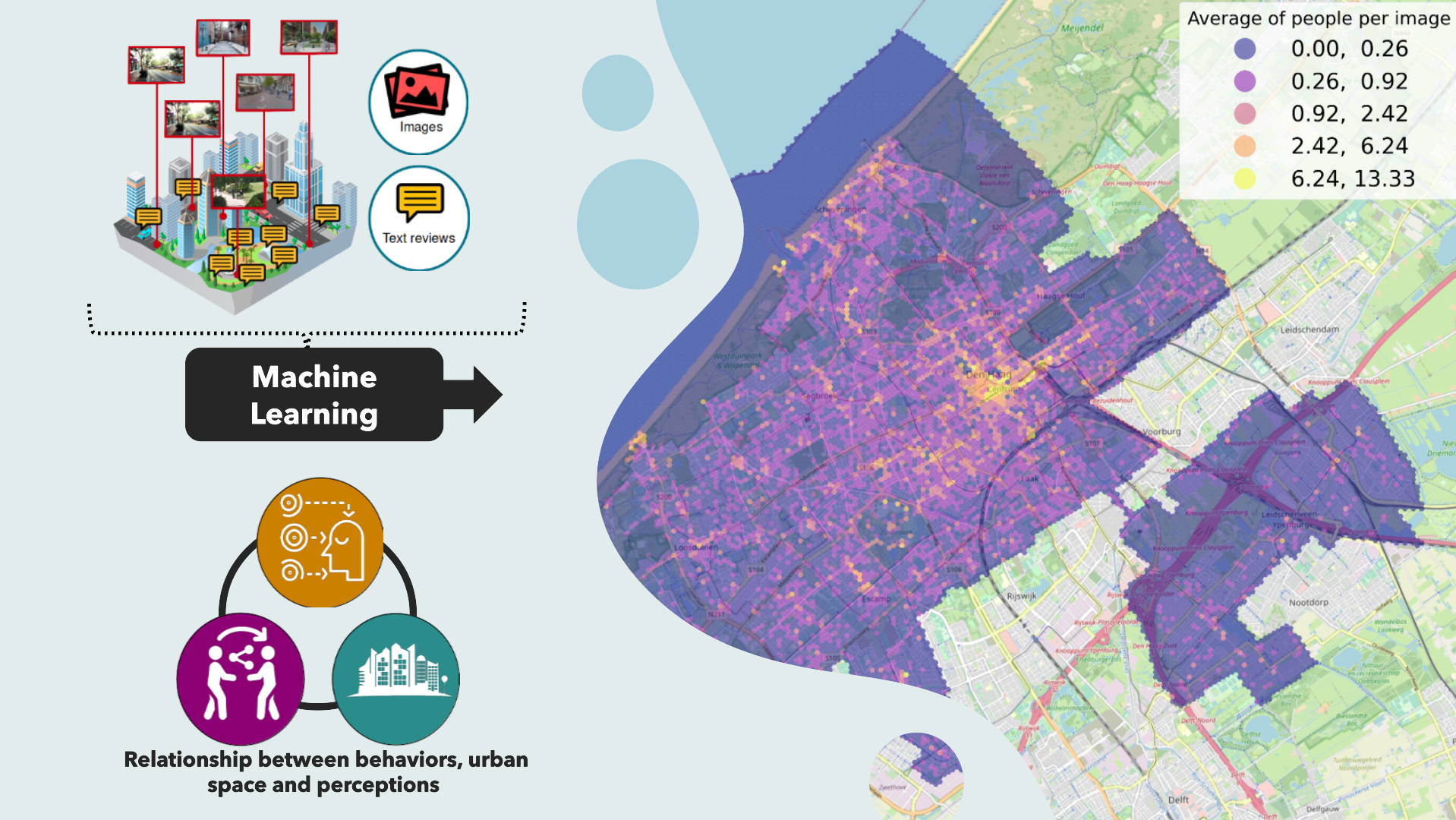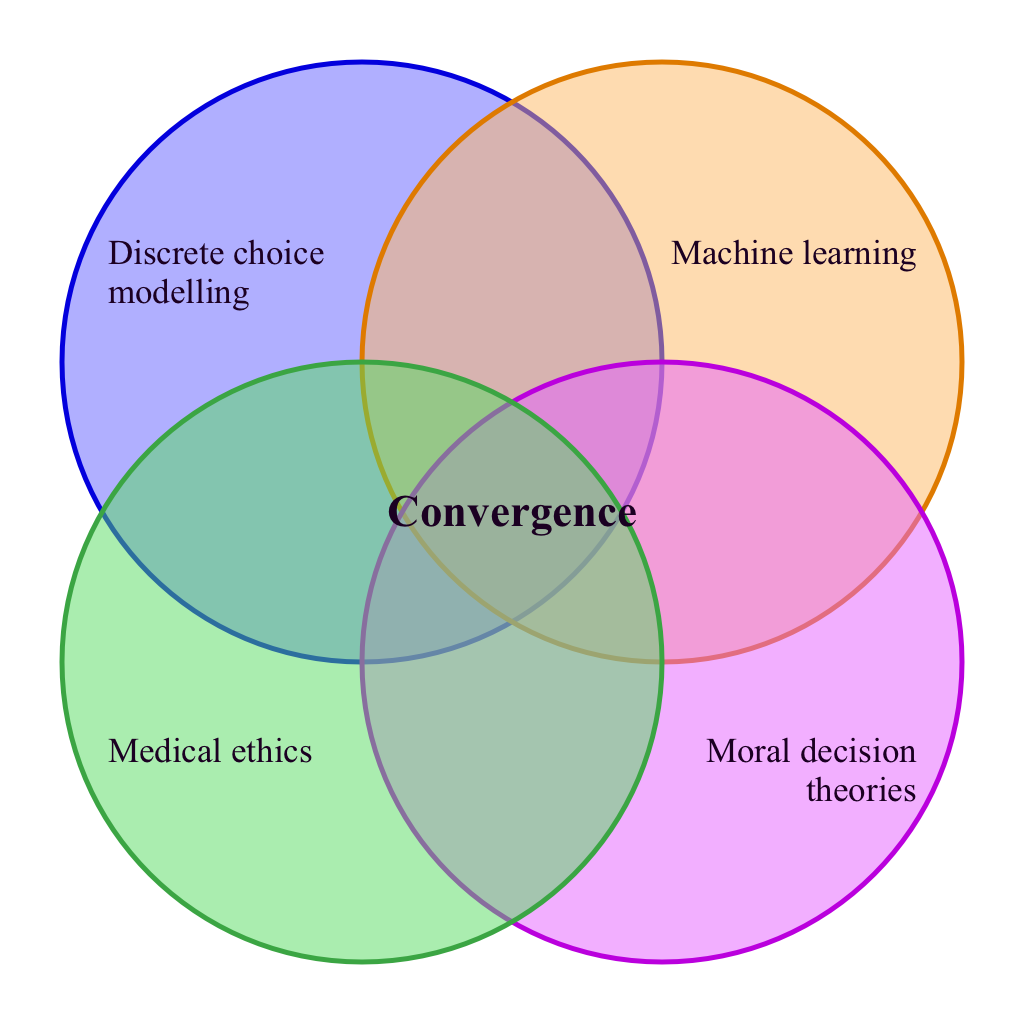Projects
Using artificial intelligence to comprehend, automate and assist choice modellers` decisions
Urban factors shaping residential segregation patterns in cities
Vehicle interaction in urban traffic: a perspective from human behaviour and decisions
Understanding the relationships between urban space, urban perceptions and human behaviours in the urban environment
Machine learning approaches to understand urban noise pollution and its perception
Diabolical dilemmas in allocating scarce health resources: combining choice modelling and machine learning to develop models of moral choice behaviour
Using artificial intelligence to comprehend, automate and assist choice modellers` decisions
Discrete choice modelling is a well-developed and theoretically underpinned modelling framework, which is used in various scientific disciplines for studying human behaviour, including in transport, health, economics, and marketing. Discrete choice models are typically used to infer preferences over attributes and alternatives as well as to compute consumers' willingness to pay, e.g. to improve a service or product. As such, discrete choice models are often instrumental to policymaking.
Choice modelling involves mixing formal behavioural theories and statistical methods with subjective judgments of the model builder (a.k.a. the choice modeller). Model building is often considered an art, and involves various stages, such as data collection, descriptive analysis, model specification development, and interpretation of outcomes. During the modelling process, numerous small and large decisions must be made by the choice modeller, such as which analyses to conduct and which model specifications to test. Nowadays there various textbooks and courses available to learn modelling choice behaviour.
However, the full modelling process leading to the final choice models reported in scientific papers and/or used for policy analysis is only partially codified. Small, but potentially important, modelling steps are underreported or even overlooked, especially those prior to the actual estimation of choice models. This lack of knowledge on the entire modelling process hampers discussion and development of best practices in choice modelling. Moreover, it holds back efforts to automate part of the modelling process in software packages.
The project has two main objectives. Firstly, it aims to provide a comprehensive understanding of the various modelling steps employed by choice modellers during the collection of choice data and the development of choice models. Secondly, it seeks to develop a set of tools that can support choice modellers by offering recommendations and automating various stages of data collection, analysis, model specification development, and outcome interpretation. These tools will streamline the process and enhance the efficiency of choice modelling, enabling researchers to make better-informed modelling decisions and draw meaningful conclusions from their analyses.
Urban factors shaping residential segregation patterns in cities
Residential segregation is a major issue for local, regional, and national authorities. It is known to exacerbate existing inequality across groups in various important aspects of life, such as educational achievements, well-being, and health condition.
However, segregation is a phenomenon that is hard to quantify and assess. A lack of understanding of (1) the forms it takes, (2) its dynamics, and (3) its relationship with urban development, hampers authorities to address segregation effectively. This project aims at addressing these three knowledge gaps.
In the first study, we develop a regionalization method to identify residential segregation patterns and propose to characterize the forms they take along three dimensions: intensity, separation, and scale. These dimensions designate respectively the over-representation of a group in segregated regions, the proportion of people from that group living in these regions, and the spatial extent of these regions. We observe that highly diverse segregation patterns coexist across Dutch municipalities. Also, we have identified associations between patterns of segregation and city characteristics. Notably, our results suggest a proportional relation between the spatial scale of segregation and the city size.
Future research aims at assessing the dynamics of these patterns in Dutch cities between 2010 and 2020, and investigating how urban developments, such as e.g. housing and transit infrastructure policies, influence these segregation patterns.
Publications
- A regionalization method filtering out small-scale spatial fluctuations, Lucas Spierenburg, Sander van Cranenburgh, Oded Cats, AGILE GIScience Ser., 3, 61, 2022
- Characterizing Residential Segregation in Cities Using Intensity, Separation, and Scale Indicators (preprint), Lucas Spierenburg, Sander van Cranenburgh, Oded Cats, 2022
Vehicle coordination in urban traffic: a perspective from human behaviour and decisions
Many believe Connected and Automated Vehicles (CAVs) will populate our roads and urban environments in the medium-term future. CAVs hold the promise to improve road safety and mitigate traffic congestion. They could also reduce vehicle energy consumption and associated externalities, such as CO2 emissions. In this future, CAVs will share the road with human driven vehicles and other CAVs, so they must be able to coordinate their actions and operations with other road users. Such coordination is especially important in urban settings, which tend to be more complex and unpredictable than highways.
The objectives of this project are twofold. First, we aim to shed light on how humans coordinate their driving behaviour in urban traffic. We analyse vehicle trajectories extracted from drone video footage from 100+ intersections and investigate vehicle movements using various pattern recognition techniques. Second, we aim to explore how insights into human coordination can be successfully integrated into the design and implementation of future CAVs. We derive consensus and conventions of coordinated human driving to improve the accuracy and certainty of behaviour prediction, thus enabling CAVs to make smarter coordinated decisions. We hope this project can contribute to swift development and adoption of CAVs, and in turn safer, smoother, and more sustainable urban mobility.
The video's are from www.round-dataset.com
Copyright Institute for Automotive Engineering, RWTH Aachen University.
Understanding the relationships between urban space, urban perceptions and human behaviours in the urban environment
The physical urban space affects people's activities and daily patterns. Vice versa, people's activities affect the design and evolvement of the urban space. Moreover, the physical urban space and how people perceive this space are correlated but may not be the same.
This project aims to deepen our understanding of the innate relationships between the (physical) urban space, people's urban perceptions of the urban space, and human activities in urban space. Recent advances in machine learning combined with the availability of new data sources, such as text reviews of places and street-level photos, offer opportunities to study these complex relationships at unprecenteded levels of depth and scale.
In the first study, we investigate associations between the number of people encountered in urban spaces and the characteristics of those spaces. To this end, we have developed a new method to collect and process millions of street-level images. We analyse the collected images using computer vision models to count the number of people and identify urban space characteristics, such as vegetation and land use. Finally, we regress the number of people with the characteristics of the urban space. In line with behaviour intuition, the results of our first study show that people tend to be in places with more food places and bikes.
Our subsequent studies aim to develop structural causal models that identify causal relationships rather than associations. Ultimately, this project strives to generate insights that contribute to the design of cities better in tune with their citizens' needs.
Publications
- Enriching geospatial data with computer vision to identify urban environment determinants of social interactions, Francisco Garrido-Valenzuela, Sander van Cranenburgh, Oded Cats, AGILE GIScience Ser., 3, 72, 2022
Machine learning approaches to understand urban noise pollution and its perception
The sound of urban environments is often dominated by noise from transportation and residents, with profound psychological and medical effects. Higher noise exposure has been correlated with higher stress levels, sleep disruptions and long-term health implications. Noise mapping and control is often based on averaged sound levels for day, evening, and night time. While such aggregations are widely available and simplify noise mapping, they do not capture many relevant aspects of the human perception to noise. A constant background noise may have different effects than high-peak noise events, yet both could result in the same averaged sound level. Furthermore, such measures only account for the perceived loudness, but ignore other knowledge on the perception of sound.
This project wants to utilize machine learning and big data to improve both: the temporal scale of noise mapping, and the properties used to describe noise in such maps. Ultimately, this project contributes to a better understanding on the effects of noise pollutions and can inform more targeted noise mitigation policies.
Diabolical dilemmas in allocating scarce health resources: combining choice modelling and machine learning to develop models of moral choice behaviour
Healthcare resources are under heavy pressure due to rising expenditures, an ageing population and high prices of new treatment options. Decisions about allocating scarce resources must be made. These decisions often involve diabolical dilemmas, which arise when decisions have potential consequences that one patient will die to save the life of another patient or, more generally, when one patient gains one or more life years while another does not. Such dilemmas have come to the forefront during the COVID pandemic but have always been and will remain a feature of healthcare policies. In essence, it boils down to allocating scarce resources.
Discrete choice models (DCMs), rooted in consumer choice theory, are widely advocated as a way to understand choice behaviours and inform health policy and clinical decisions. However, moral human decision processes are qualitatively at odds with traditional choice theory's core assumptions. For example, moral choices are often based on simple heuristics and emotions rather than based on utility-maximising principles. In many cases, trade-offs (e.g., between money and health) are considered taboo, which violates the core assumptions of choice theory. Ignoring this discrepancy between moral choice behaviour and the assumptions of the current models leads to erroneous model outcomes and misguided policy recommendations.
This project aims to develop models of moral choice behaviour by combining choice modelling and machine learning. My project focuses explicitly on understanding moral choice behaviour in the context of healthcare decisions. We argue that combining machine learning’s ability to discover patterns from data with discrete choice theories, mathematical elegance, and behavioural appeal holds the promise to uncover the complex mechanisms underlying moral choice behaviour. In this project, we work at the intersection of choice modelling, machine learning, moral decision theory, and medical ethics. Ultimately, we aim to help policymakers in healthcare to make better-informed decisions about allocating scarce healthcare resources in a value-based way.

